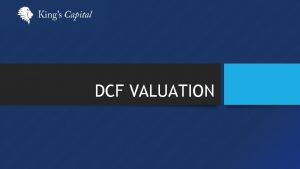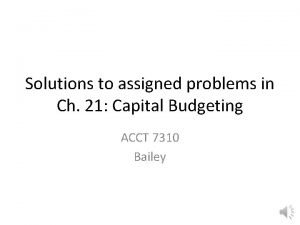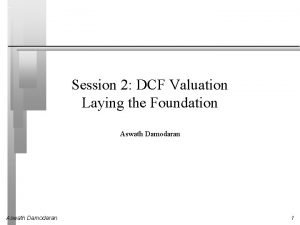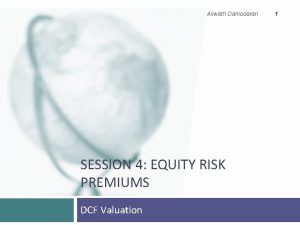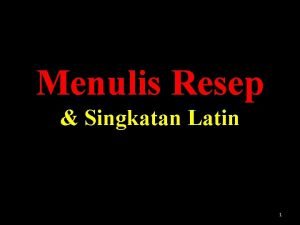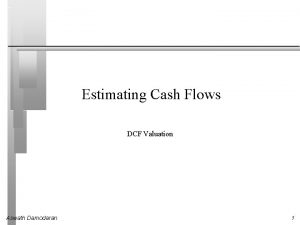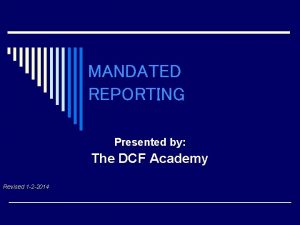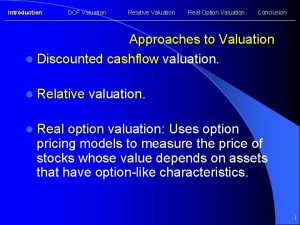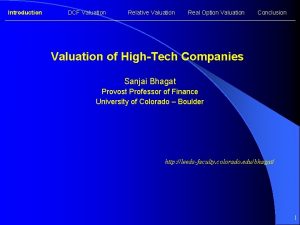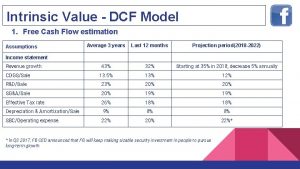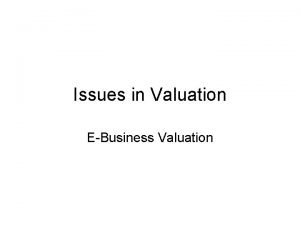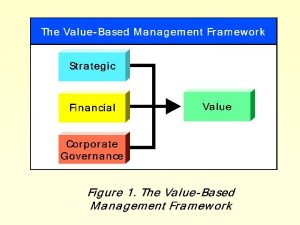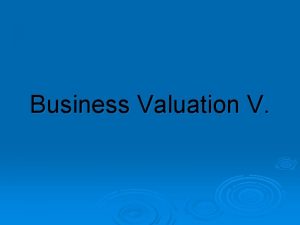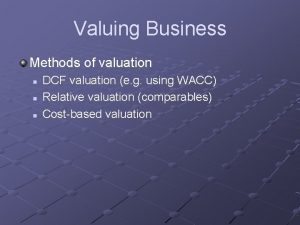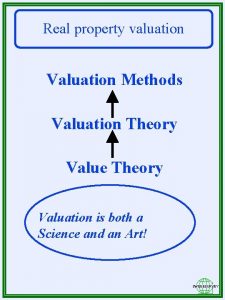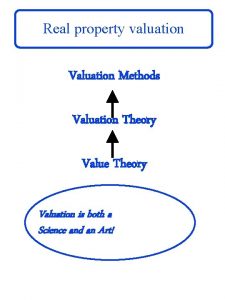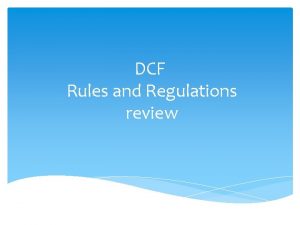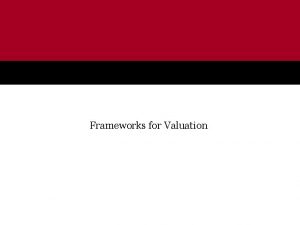DCF VALUATION The essence of intrinsic value In












- Slides: 12

DCF VALUATION

The essence of intrinsic value • In intrinsic valuation, you value an asset based upon its fundamentals (or intrinsic characteristics). • For cash flow generating assets, the intrinsic value will be a function of the magnitude of the expected cash flows on the asset over its lifetime and the uncertainty about receiving those cash flows. • Discounted cash flow valuation is a tool for estimating intrinsic value, where the expected value of an asset is written as the present value of the expected cash flows on the asset, with either the cash flows or the discount rate adjusted to reflect the risk.

DCF basics: Cash Flows and Discount Rate • There are two components to a DCF calculation: The Cash Flows and the Discount Rate: • Cash Flows: Can be Interest, Dividends, Free Cash Flow, Principal Repayments, any cash flow that the investor can get paid • Discount Rate: The required rate of return that the Investor demands on its Investment.

DCF Choices: Equity Valuation versus Firm Valuation

Equity Valuation

Firm Valuation

Discounted Cash Flow Valuation: The Steps 1. Estimate the discount rate or rates to use in the valuation • Discount rate can be either a cost of equity (if doing equity valuation) or a cost of capital (if valuing the firm) • Discount rate can be in nominal terms or real terms, depending upon whether the cash flows are nominal or real • Discount rate can vary across time. 2. Estimate the current earnings and cash flows on the asset, to either equity investors (CF to Equity) or to all claimholders (CF to Firm) 3. Estimate the future earnings and cash flows on the firm being valued, generally by estimating an expected growth rate in earnings. 4. Estimate when the firm will reach stable growth and what characteristics (risk & cash flow) it will have when it does. 5. Choose the right DCF model for this asset and value it.

Example

Example (cont’d)

First Principle of Valuation • Discounting Consistency Principle: Never mix and match cash flows and discount rates. • Mismatching cash flows to discount rates is deadly. • Discounting cashflows after debt cash flows (equity cash flows) at the weighted average cost of capital will lead to an upwardly biased estimate of the value of equity • Discounting pre-debt cashflows (cash flows to the firm) at the cost of equity will yield a downward biased estimate of the value of the firm.

Additional resources • http: //www. investopedia. com/terms/c/costofcapital. asp • http: //www. investopedia. com/terms/d/dcf. asp • http: //www. morningstar. co. uk/uk/news/65385/the-discountedcash-flow-method. aspx

Excel spreadsheet • https: //drive. google. com/open? id=0 B 7 i. Qz. YAy. XZym. WDVZYn. Jr. QUN OTGc)
 Dcf intrinsic value
Dcf intrinsic value Fulya batur
Fulya batur Fixed income valuation
Fixed income valuation Example of claim and counterclaim sentence
Example of claim and counterclaim sentence Dcf sensitivity analysis
Dcf sensitivity analysis Fsfn production login
Fsfn production login Dcf project management
Dcf project management Dcf aswath
Dcf aswath Damodaran country risk premium 2016
Damodaran country risk premium 2016 Mandated reporting massachusetts
Mandated reporting massachusetts Resep dokter hewan
Resep dokter hewan Non cash working capital dcf
Non cash working capital dcf Dcf careline 136
Dcf careline 136
